In late 1608 the 31-year-old Peter Paul Rubens left the stimulating artistic world of Italy, where he had spent eight transformative years, to return to his hometown of Antwerp, because his mother was ill. She died before he arrived but the prodigal son stayed on, spotting his career chance. What followed over the next decade was his development into the diplomat, businessman and entrepreneur that would make him one of the most successful European artists of all time.
The exhibition ‘Early Rubens’ at San Francisco’s Legion of Honor (and travelling to the Art Gallery of Ontario later this year) tells this story. Here, some of Rubens’ great canvases, plus smaller paintings and works on paper, have been gathered from around the world to hang in the museum’s neoclassical building in the cliff-top Lincoln Park, overlooking the Pacific Ocean. A short walk in one direction reaches a surf-kissed golden beach; in the other direction, Golden Gate Bridge. One feels Rubens would have relished his work arriving in this famously dynamic city on the furthest edge of the New World.
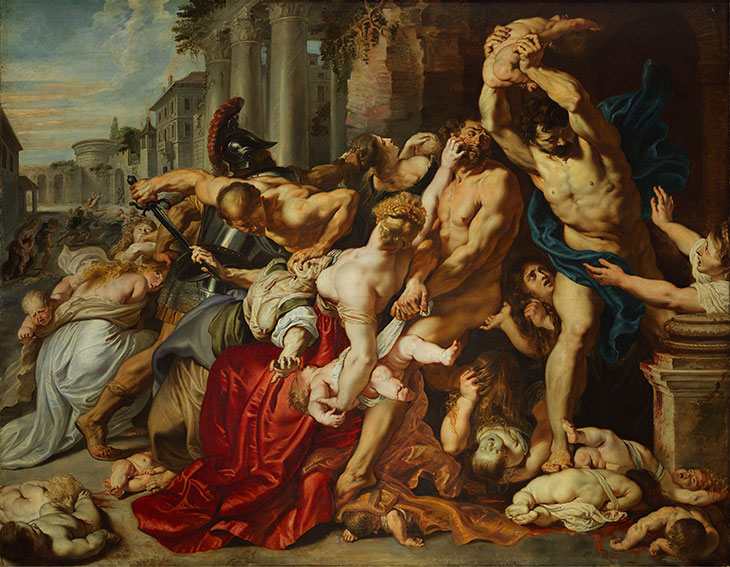
The Massacre of the Innocents (c. 1611–12), Peter Paul Rubens. Art Gallery of Ontario. Photo: Sean Weaver/Art Gallery of Ontario. Courtesy Fine Arts Museums of San Francisco
The Antwerp that Rubens had returned to by the end of 1608, ravaged by years of religious warfare, was on the brink of peace and regeneration. The Twelve Years’ Truce between Spain, the Catholic Southern Netherlands, and the Protestant northern territories – now recognised as the Dutch Republic, with full trading rights – was signed in Antwerp City Hall on 9 April. Thanks to his friendship with the art collector and city burgomaster Nicolaas Rockox, Rubens won the commission to make a commemorative painting of the Adoration of the Magi (now in the Prado) for the room where the treaty was signed. San Francisco could not have that picture but it does have Rubens’ astonishing Massacre of the Innocents – owned by the Art Gallery of Ontario – made around two years later for an Antwerp residence. The painting’s centrifugal mess of bodies takes inspiration from the struggling, intertwined figures of the antique sculpture of the Laocoön group in Rome. In this, Rubens is already an international artist, blending his Italian training with Flemish elements such as graphic realism, attention to different textures, elaborate backgrounds and glistening light.
From the start, Rubens networked his way through different parts of Flemish society. When in 1609 his scholar brother Philip – the subject of a tender, rosy-cheeked portrait made in 1610–11 – became Antwerp’s municipal secretary, this opened the door to meeting the political elite. Soon after, Rubens was married to Isabella Brant, part of an influential local family. The artist’s 1620–25 portrait of Isabella captures an intelligent, spritely and formidable partner.
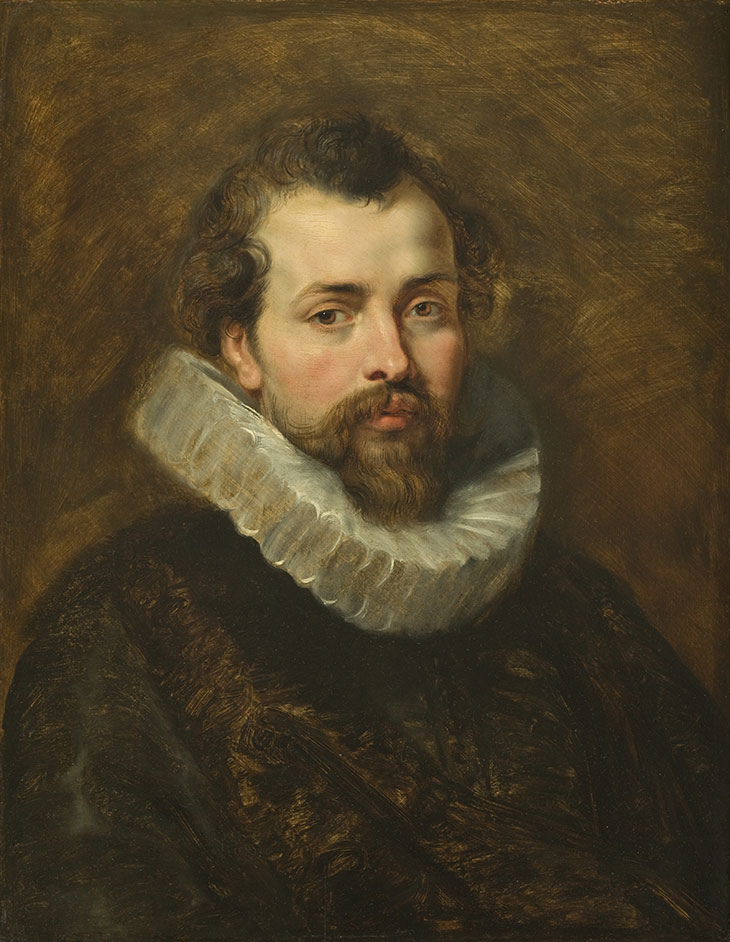
Portrait of Philip Rubens (c. 1610–11), Peter Paul Rubens. Detroit Institute Of Art. Photo: Wikimedia Commons
Also in 1609, Archdukes Albert and Isabella appointed him court painter at Brussels, an honour Rubens skilfully adjusted to allow him to remain in Antwerp and receive commissions from other patrons. He was also exempted from all taxes and from registering his pupils with the local artists’ Guild of St Luke, so he could choose whomever he wanted for his workshop. This deal gave him the freedom to build his reputation, with artists queuing up to work for him, and grow his output. And his workshop methods were innovative: Rubens was not only happy to follow the northern European system of two principle artists working together on a painting, which carried extra prestige for local patrons (collaborators included Frans Snyders and Jan Brueghel the Elder); he also introduced the Italian idea that a painting’s merit is all about the artist’s creative imagination, and that the actual production of it can be by trusted pupils. Furthermore, to control and make money from the dissemination of his ideas, in around 1618 Rubens became the first Flemish painter to launch a printmaking business, involving his own studio in the engraving and publishing of his designs.
Throughout his time in Antwerp, Rubens worked on many commissions for large-scale didactic altarpieces, a key visual tool that the Counter-Reformation church, especially the Jesuits, was using the lure the faithful back into the fold. In northern Europe, Antwerp was the hub of this programme; there alone, between 1609 and 1620, Rubens – who equipped his big house with an especially large workshop to accommodate the pictures – completed 22 altarpieces and a total of 63 works for the city’s religious buildings. This phenomenal output is hinted at by his two Lamentations (c. 1602–06 and 1612), Entombment (c. 1612), and the Michielson Triptych, also known as Christ on the Straw (1618).
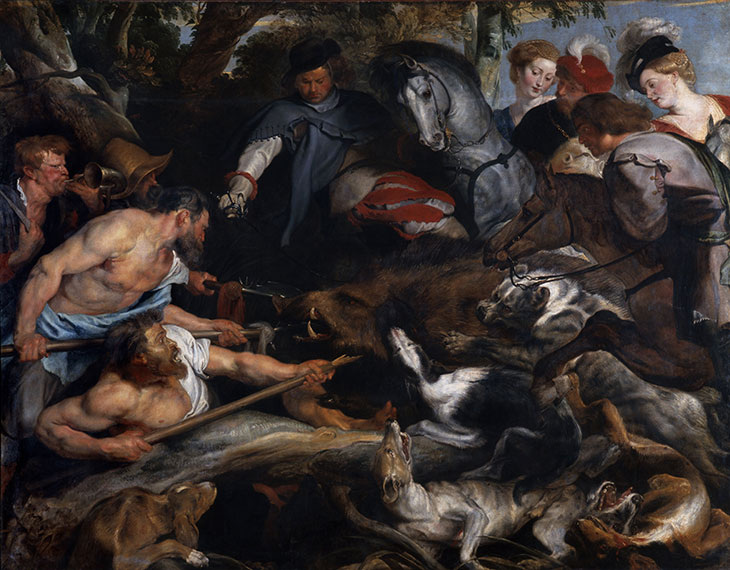
The Boar Hunt (c. 1615–17), Peter Paul Rubens. Musée des Beaux Arts, Marseille. Photo: Jean Bernard. Courtesy Fine Art Museums of San Francisco; © RMN-Grand Palais/Art Resource, NY
Private commissions were another major source of income. In around 1609–10 Rockox asked him to paint a showpiece for his ‘groote saleth’, the big ground-floor parlour of his urban estate. The unlikely subject was Samson and Delilah, and Rubens depicted the pivotal moment of intense love matched by dreadful deceit. The painting, now owned by the National Gallery in London, is too fragile to be moved but the show discusses it deftly with two related oil sketches and a preparatory drawing. Nearby, Rubens’s Lot and his Daughters (1613–14), which was probably also made to hang in a private residence, presents a similarly appalling drama of love and deceit (or perhaps sinful complicity).
It is perhaps more rewarding to sit down at the end of a visit to this show to enjoy the three monumental canvases that officially open it: The Flight of Lot and His Family from Sodom (1613–15), Daniel in the Lions’ Den (c. 1614–16), and The Boar Hunt (c. 1615–17). All three of these paintings were produced in the middle of the extraordinary decade on which the exhibition focuses. ‘These three pictures convey what makes Rubens special – the array of subjects, his quotes from the classics, his workshop, his painting,’ says Kirk Nickel, who co-curated the show and is assistant curator of European paintings at the Fine Arts Museums of San Francisco, of which the Legion of Honor is one part. ‘I don’t know of anyone else in the whole history of art who manages to get this flesh, translucency, life of the skin, this palpable sense of the body.’ The show, he says, ‘has been a dream to curate. We didn’t get the whole list but we’re very happy with what we got.’
‘Early Rubens’ is at the Legion of Honor, San Francisco, until 8 September.
Unlimited access from just $16 every 3 months
Subscribe to get unlimited and exclusive access to the top art stories, interviews and exhibition reviews.

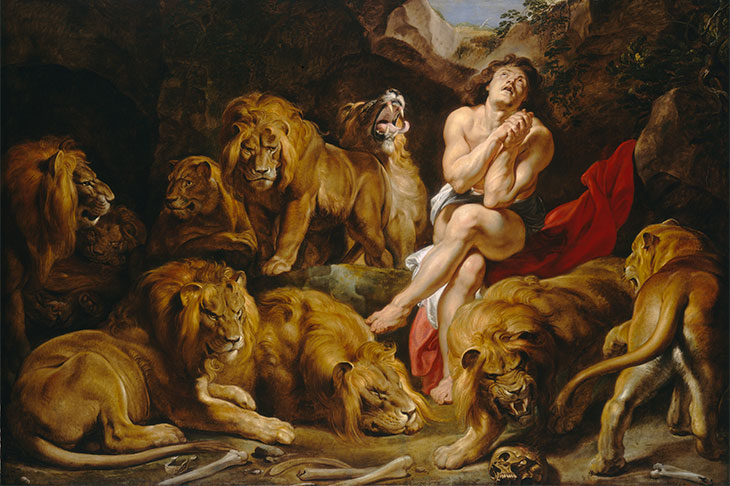
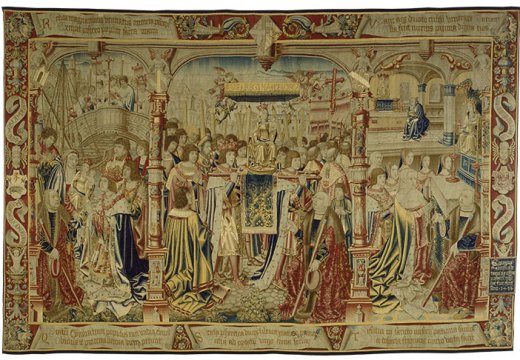
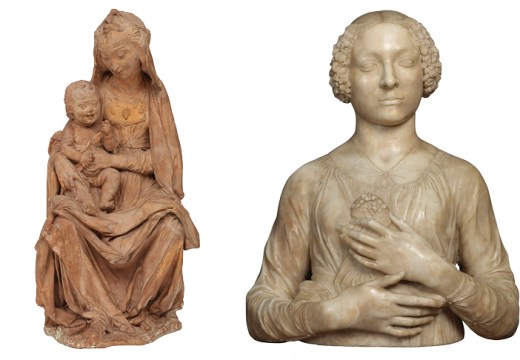
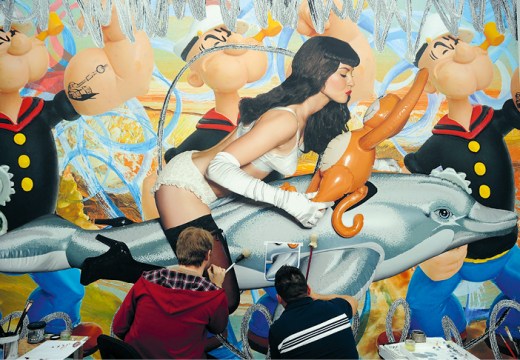









![Masterpiece [Re]discovery 2022. Photo: Ben Fisher Photography, courtesy of Masterpiece London](http://www.apollo-magazine.com/wp-content/uploads/2022/07/MPL2022_4263.jpg)
Why are fathers so absent from art history?